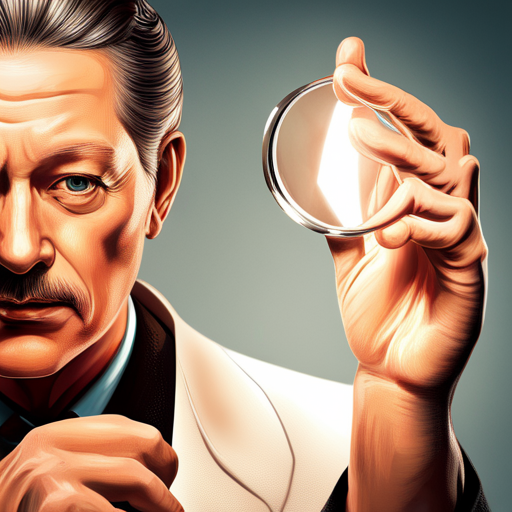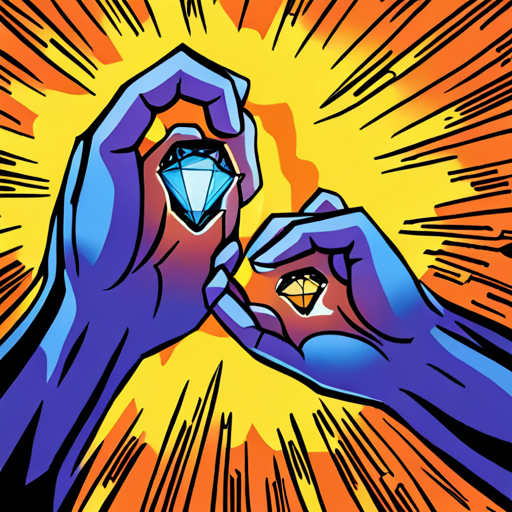Crystals have long been associated with various healing properties and are often sought after for their unique qualities. One intriguing aspect of crystals is their temperature, with the common belief being that genuine crystals feel cold to the touch, even on warm days.
However, the truth behind crystal temperature is more complex than initially thought. It is not uncommon for crystals to absorb body heat and remain cool, while fake crystals may feel warmer. Yet, it is essential to note that a cold crystal does not necessarily indicate authenticity, as it can also be influenced by factors such as exposure to sunlight or improper use.
This article aims to explore the factors that determine crystal temperature and provide insights into distinguishing genuine crystals from counterfeit ones. By discussing signs of authenticity and offering tips for purchasing genuine crystals, readers can make informed decisions when acquiring these fascinating objects.
Our Highlighted Gems
- Genuine crystals feel cold to the touch, even on warm days.
- Fake crystals may feel warmer than genuine crystals.
- Authentic crystals often have asymmetrical patterns, while fake crystals have symmetrical patterns.
– The weight of genuine crystals is usually heavier than fake ones due to their dense mineral composition.
What Determines Crystal Temperature?

The temperature of a crystal is determined by various factors, such as its ability to absorb and retain body heat or its exposure to direct sunlight.
Crystals have the ability to absorb heat from their surroundings, including body heat, which can cause them to feel warm to the touch. Additionally, crystals can also become warm when exposed to direct sunlight, as they absorb the heat from the sun’s rays.
On the other hand, crystals can also feel cold, especially when they are not in contact with a heat source. This is because crystals have a lower thermal conductivity, which means they do not readily transfer heat.
Therefore, the temperature of a crystal can vary depending on these factors, and it is important to consider these factors when assessing the authenticity and condition of a crystal.
Signs of Authentic Crystals

One indicator of genuine crystals is the presence of asymmetrical patterns. Fake crystals often have symmetrical patterns, which can be a sign of mass production or artificial manipulation. Authentic crystals, on the other hand, may exhibit irregular shapes and patterns that are unique to each crystal. These asymmetrical patterns can add to the beauty and uniqueness of the crystal, making it more desirable to collectors and crystal enthusiasts.
To further determine the authenticity of a crystal, one can also consider its weight. Genuine crystals tend to be heavier than fake ones. This is because real crystals are made up of dense minerals, while fake crystals may be made of lighter materials or even plastic.
Additionally, the price of a crystal can be a good indicator of its authenticity. Genuine crystals tend to be more expensive due to their rarity and the effort required to mine and extract them. On the other hand, fake crystals are often mass-produced and can be found at lower prices.
Another sign of an authentic crystal is the presence of air bubbles. Fake crystals may have visible air bubbles trapped inside, indicating that they were made using a manufacturing process that involves pouring liquid material into a mold.
Asymmetrical patterns, weight, price, and the presence of air bubbles are all signs that can help identify authentic crystals. By considering these factors, collectors and crystal enthusiasts can make more informed decisions when purchasing crystals.
Tips for Buying Genuine Crystals

To ensure the authenticity of purchased crystals, it is advisable to carefully examine the store’s reputation and customer reviews. Buying from reputable stores with positive reviews significantly reduces the risk of purchasing fake crystals. It is important to consider the credibility and reliability of the store before making a purchase.
Additionally, paying attention to how a crystal feels in your hand can help determine its authenticity. Genuine crystals often have a cool and cold sensation when held, even at room temperature. If there is any doubt about the authenticity of a crystal, it is best to refrain from buying it.
Taking these precautions can help ensure that genuine crystals are obtained and prevent the disappointment of purchasing fake or counterfeit items.
Frequently Asked Questions
How do crystals affect temperature in their surroundings?
Crystals can affect temperature in their surroundings by absorbing or releasing heat. They can become warm when exposed to sources of heat such as body temperature or sunlight, while feeling cool when they absorb heat from their surroundings.
Can crystals change temperature over time?
Crystals can change temperature over time. Factors such as absorption of body heat or exposure to sunlight can cause crystals to become warm. However, warm crystals may also indicate a need for cleansing or improper usage.
Are there any health benefits associated with the temperature of crystals?
There is no scientific evidence to support any health benefits associated with the temperature of crystals. The temperature of crystals is primarily influenced by external factors such as body heat or sunlight exposure.
Is there a specific temperature range that crystals should be stored in?
The specific temperature range for storing crystals varies depending on the type of crystal. However, generally, it is recommended to store crystals in a cool and dry environment, away from direct sunlight or extreme temperature fluctuations.
Do different types of crystals have different temperature properties?
Different types of crystals can have different temperature properties. Some crystals may naturally feel colder or warmer to the touch due to their unique composition and properties, but this can vary depending on the specific crystal.

